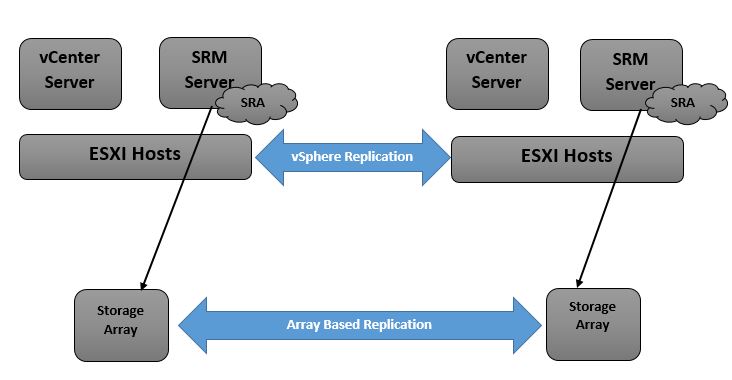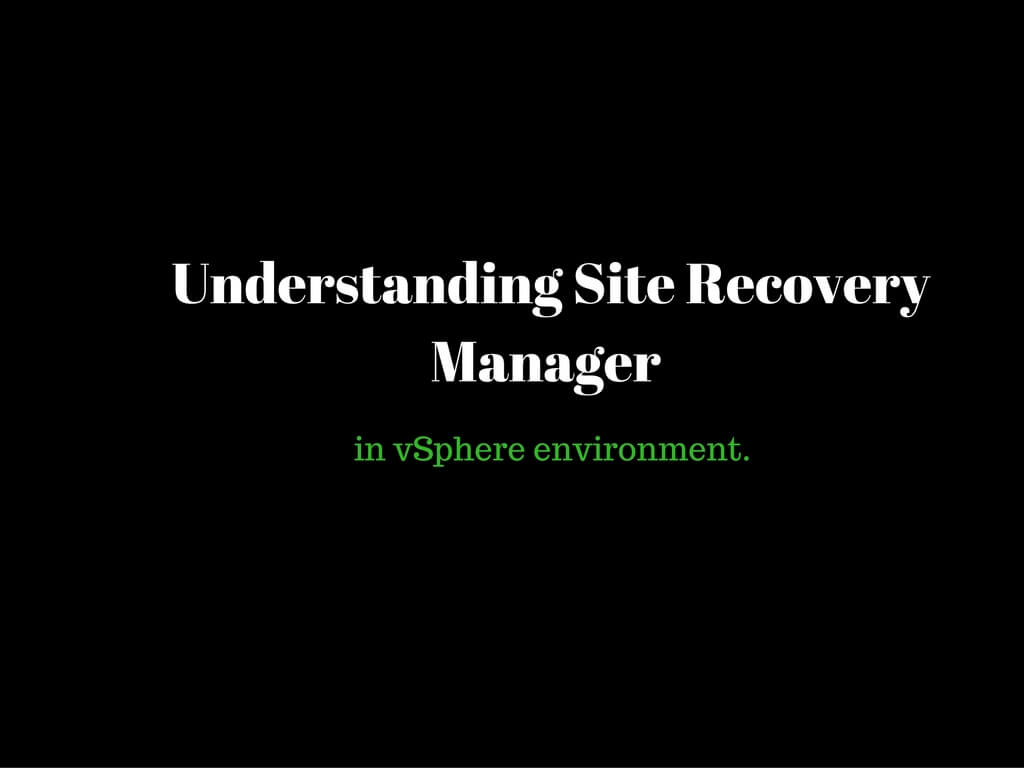So let us start exploring products other than ESXI and vCenter as VMware has different products in their bag that is widely used in the market. Let me give you an introduction on site recovery manager SRM in short.
SRM is basically a workflow manager that automates failover in events of disaster. A small example would bring a better understanding.
Enterprise companies do always have sites spanned across different geographical locations. They would be having a production site and a disaster recovery site. In case production site goes down due to unavoidable circumstances DR should be in a state to take charge and ensure all the application servers are up and running in very short span of time.
SRM’s main functionality is to achieve this goal where in the production site is down or destroyed, it would failover to DR site to ensure availability. But in order to ensure that failover succeeds we need certain replication technology which constantly replicates data across sites.
Replication technology are categorized in two ways.
- Array Based Replication
- vSphere Replication
Array based replication is performed at storage level where in entire LUN gets replicated between sites. ABR uses a small program called SRA(Storage replication adopters) which is designed by the concerned storage vendor that allows SRM to interact with the specific storage array.
SRA needs to be installed on the server where SRM resides. ABR can perform consistently within the same storage array. Keeping two different storage arrays between sites are not supported nor recommended.
Both the replication technologies need to be configured using certain Recovery point objective or RPO
RPO is the maximum time to afford a data loss in an event of disaster. For eg if the RPO is set to 15 minutes, It indicates a maximum of 15 minutes of data loss can be tolerated.
In case of ABR the minimum RPO value can be set to 0 and maximum would be defined by the storage vendor
vSphere Replication on the other end involves host based replication to replicate data across sites. The feature replicates the data at virtual layer rather than storage layer. The main advantage of using vSphere replication is it would eliminate the need of using same storage array unlike ABR where compatibility between storage arrays plays a key factor.In addition to that VR can be used to replicate individual VM’s unlike ABR where entire lun is replicated.
Virtual machine that needs to be replicated across sites would be a part of the protected groups.
RPO for VR would be minimum of 15 minutes and maximum that could be defined would 24 hours.
Let me give you a general architecture on SRM using both the replication technologies.

This was a general overview on SRM. In my upcoming artcles we would have a deep dive on installation and configurations in order to setup SRM.
Hope this article was helpful. Watch out for more.
